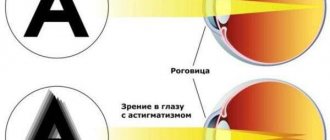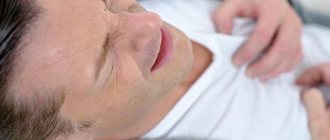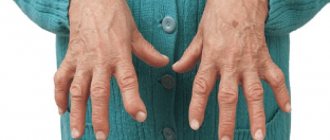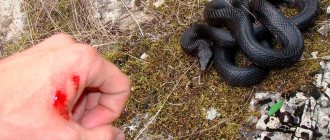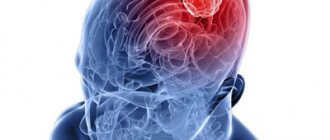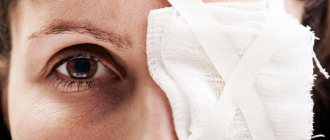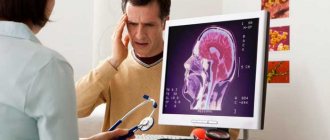ONMK - what is it?
Many people who have nothing to do with medicine probably do not know what stroke is. So, an acute circulatory disorder in the brain is a stroke, which causes damage and death of brain cells. The cause of this disease is the formation of a blood clot in the blood vessels of the brain or the rupture of some blood vessels, which causes the death of a huge number of nerve cells and blood cells. According to statistics, acute stroke ranks first among diseases that cause human death. Every year around the world, as the federal register of patients with acute stroke indicates, 14 percent of people die from this disease, as well as 16 from other types of diseases of the circulatory system.
Reasons why stroke may occur
In order to prevent the occurrence of this disease, it is necessary to pay attention to your lifestyle from an early age. For example, constant exercise can significantly reduce the possibility of developing stroke. You already know what it is; some of the causes of this disease will be discussed further.
As a rule, this disease does not come suddenly; very often the diagnosis of stroke can be established as a consequence of certain diseases. Often the cause of this condition can be:
- hypertension;
- obesity is the most common cause indicated by the federal register of patients with stroke;
- diabetes;
- high cholesterol;
- heart disease;
- alcohol and smoking;
- various types of medicines;
- high hemoglobin level;
- according to the federal register of acute stroke diseases, another reason is age;
- traumatic brain injury;
- genetic predisposition and so on.
Now it’s clear what ONMC is. These are the consequences of an incorrect lifestyle. Therefore, it is very important to monitor your health and physical condition.
Ischemic stroke
Ischemic stroke is a stroke caused by damage to brain tissue and disruption of blood flow to one or another part of it.
Most patients with stroke of ischemic type have common diseases of the cardiovascular system. Such diseases also include arteriosclerosis, heart disease (arrhythmia, rheumatic disease), and diabetes.
This type of stroke is characterized by sharp and frequent manifestations of pain, the consequence of which is a deterioration of blood circulation in the cerebral cortex. As a rule, such attacks can occur several times an hour and last for 24 hours.
Literature
- Kostenko E. V. Post-stroke pain syndromes: clinical aspects, diagnostic criteria, features of therapy and rehabilitation measures, 2017
- British stroke association. Memory, thinking and understanding after stroke
- British stroke association. Physical effects of stroke
- British stroke association. Communication problems
- Smajlović D, Kojić B, Sinanović O. Five-year survival-after first-ever stroke, 2006
- Penny Wheeler. Understanding stroke
Irina Kostyleva
Higher medical education. Kirov State Medical Academy (KSMA). Local therapist. More about the author
All articles by the author
ACVA is included in the 10th revision of the international classification of diseases
ONMK codes (ICD 10):
- I63.0. Human cerebral infarction as a consequence of thrombosis of precerebral blood arteries.
- I63.1. Human cerebral infarction after embolism of precerebral blood arteries.
- I63.2. Cerebral infarction as a consequence of stenosis of the precerebral blood arteries or unrefined blockage of the cerebral arteries.
- I63.3. Stroke as a consequence of thrombosis of the blood arteries of the brain.
- I63.4. Stroke due to embolism of cerebral blood vessels.
- I63.5. Stroke as a consequence of stenosis of blood arteries or their unrefined blockage.
- I63.6. Non-pyogenic cerebral infarction as a consequence of thrombosis of the blood veins of the brain.
- I63.8. Cerebral infarction due to other causes.
- I63.9. Unrefined stroke.
- I64.0. Unrefined stroke, which manifests itself as hemorrhage or infarction.
ACVA codes (ICD 10) allow doctors to quickly establish the classification of the disease, the true cause of its occurrence and determine the necessary treatment. Consequently, this classification is the main tool in the hands of a doctor, which allows one to save the life of a particular person.
Causes of ischemic stroke ACVA
The main reason for the manifestation of ischemic stroke is a decrease in blood flow to the brain. Very often, this is why the cause of death of a person is ischemic stroke.
So, we found out the features of ischemic stroke, what it is and what its symptoms are.
This is usually the result of damage to the vessels of the neck and some arteries of the brain in the form of occlusive lesions and stenosis.
Let's find out the main reasons for its occurrence. The main factors that can affect the decrease in blood flow include the following:
1. Occlusions and stenoses of the main arteries of the brain and vessels of the neck.
2. Thrombotic layers on the surface of an atherosclerotic plaque.
3. Cardiogenic embolism, which occurs when there are artificial valves in the human heart.
4. Dissection of the main arteries of the cervical spine.
5. Hyalinosis of small arteries, as a result of which microangiopathy develops, which leads to the formation of lacunar infarction of the human brain.
6. Hemorheological changes in blood composition, which occurs with vasculitis, as well as coagulopathies.
Very rarely, the cause of this disease can be external injuries to the carotid arteries and various inflammatory processes, which can significantly impair the flow of blood through the vessels.
Also, very often, the main cause of stroke in the brain can be osteochondrosis of the cervical spine, during which blood vessels are significantly pinched, which can lead to a decrease in blood flow. Patients with osteochondrosis are constantly recommended to massage the cervical spine and smear it with various warming preparations, which can significantly dilate blood vessels and improve blood circulation.
Symptoms of stroke
Signs of this disease can often appear abruptly or increase gradually. As a rule, the main symptoms of this disease include speech and vision disorders in the patient, disturbances in various reflexes, movement coordination, headaches, disorientation, sleep disturbances, noise in the head, memory impairment, paralysis of the face, tongue, lack of sensation in some limbs, etc. Further.
In acute cerebrovascular accident, the following consequences occur: cerebral stroke, circulatory disturbance in the cerebral cortex due to the formation of blood clots in the vessels and main blood arteries of the head, etc.
When symptoms of acute cerebrovascular accident last more than a day, a stroke is diagnosed. In the first stage of this disease, severe headache, dizziness, nausea, gag reflexes, and so on may also occur. If you do not immediately pay attention to these manifestations, this can cause a person’s death.
According to the register of patients with stroke, according to statistics, the main cause of these manifestations may be high blood pressure, which can be observed during severe physical exertion. A sharp increase in blood pressure can cause rupture of cerebral vessels, followed by hemorrhage and internal cerebral hematoma.
In most cases, the above symptoms are observed before ischemia. Typically, they can last several hours or several minutes. As a rule, with the manifestation of ischemic stroke, the symptoms constantly become more active. According to experts, when these symptoms appear, most people experience disorientation, as a result of which the person loses vigilance, coordination of movements worsens, so many patients simply fall asleep. According to statistics, 75 percent of ischemic heart attacks occur during sleep.
Diagnosis of acute cerebrovascular accident of ischemic type
To identify the problem, it is necessary to conduct diagnostics and various studies using the ICD system. Doctors will be able to diagnose stroke after the following procedures:
- Blood test for electrolytes, glucose, hemostasis, lipid spectrum, antiphospholipid antibodies.
- Electrocardiography of changes in blood pressure.
- Computed tomography of the cerebral cortex, as a result of which it will be possible to detect the affected parts of the brain and the resulting hematomas without any problems.
- Cerebral angiography and so on.
Diagnostics
MRI of the brain
- Cost: 14,000 rub.
More details
Diagnosis, as a rule, begins with an examination by a neurologist, assessment of clinical symptoms and analysis of the history of the disease. Of course, both laboratory and instrumental diagnostic methods are used. The main emphasis is on identifying pathology of blood vessels and areas of softening of the brain. From the moment of blockage in the tissues, a biological reaction begins, which is called the “ischemic cascade”. Its development is accompanied by the formation of an infarct nucleus, apoptosis of brain cells and secondary diffuse cerebral edema. MRI in vascular mode, ultrasound Dopplerography of blood vessels, angiography, scintigraphy or study of the brain after the introduction of radioisotopes, positron emission tomography or study using radionuclides are used.
Treatment of acute cerebrovascular accident in ischemic type
The most common cause of death is stroke. Treatment should therefore take place under the supervision of experienced doctors. For this disease, the following therapy is carried out:
- Maintaining vital functions of the human body. The patient should take antihypertensive drugs when the blood pressure in the body is 200 to 120 mm. Hg Art. The use of anticoagulants (used for concomitant pathologies and used for a long time after normalization of the condition), vasoactive drugs, antiplatelet agents, decongestants, neuroprotectors, and so on is also prescribed.
- Various sets of exercises are performed - speech therapy classes and breathing exercises.
- The issue of thrombolysis is being considered when a patient is admitted to a medical facility within 3-6 hours from the onset of the disease.
- Secondary prevention of disease.
- Various rehabilitation measures are carried out and so on.
As a rule, the main points of treatment will be prescribed only by a doctor, who will become more familiar with the victim’s illness.
If there is a suspicion of acute cerebrovascular accident, it is necessary to contact highly qualified specialists in this field of activity. As a rule, first of all it will be necessary to undergo magnetic resonance imaging, which can accurately determine all pathologies of the cerebral cortex. In this way, it will be possible to prevent the possibility of complications of the disease and begin treatment even before it fully manifests itself. A specialized department of acute stroke, as a rule, must have special equipment that will significantly improve treatment.
Probability of recovery
At the mere mention of this diagnosis, many who hear it feel, if not panic, then some kind of anxiety and internal discomfort. Indeed, the vast majority of the population associates this diagnosis with disability or even death.
Let's take a closer look to see if this is really the case.
There are many cases of recovery, if not complete, then almost complete.
In fact, the state of affairs is such that in the same neurological department a person can be treated for stroke, physical activity is limited only by doctor’s orders and bedridden, unable to move independently even within the hospital ward.
In the first case: the hospital patient walks calmly without support or auxiliary objects. He can even walk up stairs without handrail support. Speech is preserved, completely oriented in time and space. Coordination of movements is also not impaired. Externally, there are no signs of a serious illness. The loss of neurological function is minimal and its manifestations can only be detected by neurological examination.
In the second case: a person cannot move independently; strength is only in the left arm and leg, coordination of movements in them is impaired. He is in a hospital bed. He can only turn slightly in bed to one side. Raising the head end of the bed causes dizziness. The speech is not intelligible; only certain fragments of it are understandable. Verbal communication - responds with gestures and facial expressions, selectively - to individual questions.
As you can see, the difference between stroke cases can be enormous. Moreover, both in its acute period - the first 21 days, and a year after it occurred.
This difference is due, first of all, to the size of the lesion in the substance of the brain. This is one of the most important factors influencing the depth of impairment of neurological consequences.
The size of the dead tissue as a result of a hemispheric stroke is no more than 20-30 mm. in diameter and localized outside the zone of passage of large nerve tracts (pyramidal, optic radiation) are favorable in relation to the extent of neurological dysfunction and their recovery.
Lesions larger than 30-40 mm in diameter, localized in areas where large nerve tracts pass or in the brain stem area, have an unfavorable prognosis in terms of the depth of neurological disorders and recovery from them.
The location of the stroke site plays a major role in recovery. More pronounced symptoms of brain damage will occur when the lesion is localized near the nerve pathways or in their area, even if they are small in size. This also applies to the brainstem localization of stroke. With equal sizes of dead nervous tissue, the depth of loss of function will be greater when localized in the region of the trunk.
This happens due to the high density of nerve conductors located here. The danger of this localization is due to the location in this area of a large number of vital nerve centers, including those responsible for blood circulation, breathing, digestion and other vital functions of the human body.
Disease statistics among population groups
This disease very often worries not only older people, but also young people. This disease today attracts the attention of tens of thousands of scientists from all over the world, as it very often worries people of different age categories. There have been many cases recorded when stroke began to progress in young people, and even in infants. Scientists provide statistics that show the following number of diseases per 100,000 population at different ages.
The number of patients with stroke at different ages is shown in the table.
| Females | Males | |||||||||||||
| Age | 60+ | 40-60 | 25-40 | 14-25 | 3-14 | 1-3 | 0-1 | 60+ | 40-60 | 25-40 | 14-25 | 3-14 | 1-3 | 0-1 |
| Quantity victims | 253,2 | 16 | 52,3 | 52 | 0,5 | 0,1 | 0,01 | 266,5 | 184,9 | 61,5 | 61,4 | 0,5 | 0,1 | 0,01 |
Federal register of patients with stroke
The Federal Register keeps records of the number of patients with a particular disease. He studies the progression of certain diseases and the reasons for their development. ACVA is a disease that is also being recorded. This register contains all the information about patients and their history.
The Federal Register states that mortality due to diseases of the body's vascular system is now in first place. As a rule, 50 percent of deaths are associated with acute cerebrovascular accident (ACVA), that is, the main cause of death is stroke. Every year in the Russian Federation, an average of 400-450 thousand cases of stroke are registered, that is, every minute and a half a person develops this disease. Of the total number of patients, approximately 40 percent die.
Every year the number of patients with stroke is growing significantly. Thus, according to the federal register of the ONMC department, in 1996, 16 thousand victims were registered in the Moscow region, and in 2003 this figure increased to 22 thousand patients. From this we can conclude that acute cerebrovascular accident is one of the most progressive diseases today.
According to the federal register of stroke, there are about a million people in our country who have already survived this disease, and it is worth noting that a third of the victims are people of working age. After falling ill, only 25 percent of those affected were able to return to work among people of this age. Based on these data, it can be determined that stroke is one of the most progressive and dangerous diseases.
The federal register of patients with acute stroke is replenished every day with a huge number of patients, but the number of cases remains unchanged. This is justified by the fact that life expectancy after the disease is significantly reduced. Therefore, it is worth constantly monitoring your health in order to prevent the manifestations of this disease.
How to recover quickly?
Medications
The purpose of medications is to stop the negative consequences of an attack and help the patient quickly restore lost functions.
After a stroke, 4 groups of drugs are prescribed: muscle relaxants, anticonvulsants, antiplatelet agents and antidepressants.
- Muscle relaxants. Reduce muscle hypertonicity that appears by the third month after the attack. Examples of muscle relaxants:
- Baclofen. The average price in Moscow is 350 rubles, in St. Petersburg – 270 rubles.
- Tizanidin-teva. The average price in Moscow is 173 rubles, in St. Petersburg – 121 rubles.
- Anticonvulsants. Prevents seizures. Examples of anticonvulsants:
- Phenytoin. The average price in Moscow is 35 rubles, in St. Petersburg – 28 rubles.
- Carbamazepine. The average price in Moscow is 69 rubles, in St. Petersburg – 55 rubles.
- Antiplatelet agents. Prevents the formation of blood clots. Examples of antiplatelet agents:
- Thrombo ass. The average price in Moscow is 93 rubles, in St. Petersburg – 62 rubles.
- Thrombopol. The average price in Moscow is 56 rubles, in St. Petersburg – 44 rubles.
- Antidepressants. Up to 80% of people affected by a stroke are depressed, and it is very difficult to get out of it without pharmaceutical support. Examples of antidepressants:
- Amitriptyline. The average price in Moscow is 55 rubles, in St. Petersburg – 48 rubles.
- Azafen. The average price in Moscow is 215 rubles, in St. Petersburg – 198 rubles.
If you have a stroke, you cannot self-medicate, so all medications must be prescribed by your doctor.
You will find detailed information about the treatment of ischemic stroke in the hospital and at home here.
Exercise therapy
Therapeutic physical education is the basis of post-stroke rehabilitation.
- During the early recovery period, various exercises from therapeutic gymnastics are used, the task of which is to restore the normal motor ability of the main muscle groups.
- At the later stages of the patient’s rehabilitation, elements of ergotherapy, a system aimed at adapting the patient to everyday motor activities, are included.
Classes are conducted under the supervision of an instructor , who draws up an individual physical activity plan for each patient, which consists of exercises with one’s own weight and using special exercise equipment.
It can take from 3 to 12 months for a patient to recover with exercise therapy. If you refuse therapeutic exercises, a person’s condition can only worsen.
Massage
Massage is an important addition to therapy, especially if paralysis, severe muscle spasms or regular seizures have developed after a stroke.
You can only trust a massage to an experienced specialist with a medical education.
Objectives of the procedure:
- Improving blood flow, lymph flow and metabolic processes.
- Reducing spasms.
- Returning muscles to normal tone.
The purpose of massage sessions is to restore lost body functions and improve overall health. Depending on the severity of the consequences of the attack, a course of massage will help the patient recover within 3-6 months.
Physiotherapy
Physiotherapeutic procedures affect the body using artificially created natural factors, which helps eliminate various abnormalities caused by a stroke. This type of therapy is prescribed individually, based on the patient’s condition and the appropriateness of using certain types of procedures.
The most effective type of physiotherapy is magnetic therapy , this procedure:
- improves the functioning of the endocrine and nervous systems;
- stimulates brain function, which improves the general condition of the patient.
When undergoing a full course of magnetic therapy, the patient recovers in 1.5-4 months instead of 6-12.
Despite its effectiveness, magnetic therapy is quite painful and difficult to tolerate for some patients.
Consequences of acute cerebrovascular accident
The consequences of stroke can be very different - from mild to the most severe. Very often, after an acute cerebrovascular accident, people experience the following consequences:
- Loss of sensation in a certain area of the body. Very often the sensitivity of the arms, legs, fingers, right or left side of the body, facial muscles, tongue, and so on is lost.
- Weakness or complete paralysis of an arm or arms, a leg or legs, a particular part of the body, or the right or left side of the body.
- Very often, victims lose hearing, vision, taste, and sensitivity of certain nerve endings in the limbs of the body.
- Often after a stroke, patients feel dizziness, double vision, noise in the head, and so on.
- Confused speech.
- Difficulty in pronunciation and selection of words when speaking.
- Lack of ability to recognize individual body parts.
- Involuntary urination.
- Lack of ability to move.
- Lack of orientation in space and loss of balance.
- Unexpected fainting and so on.
ACVA departments provide ongoing rehabilitation sessions for patients. As a rule, under the supervision of experienced doctors, it is possible to eliminate these consequences and completely restore the sensitivity of the body. After a certain period of time after the onset of ischemic attacks or stroke, a person will be able to completely return to a normal lifestyle. It is worth considering that so-called ischemic attacks can last for a long period of time. If they are observed throughout the day, this will lead in most cases to a full-fledged stroke. They can also occur over a period of time. Thus, some people experience these symptoms several times a year. And after each such manifestation, a certain period of rehabilitation is required.
The consequences of stroke can be very different, since the area of brain damage can be different.
Forecast
Regarding prognosis, after a right-sided stroke, life expectancy decreases to an average of 6 years, especially in women after fifty years of age. For men 45 years old, a stroke on the right side can have more severe consequences, often fatal.
The prognosis after a right-sided ischemic stroke depends on the size of the affected area of the brain. Full recovery is possible in cases of timely relief of the attack and non-critical amounts of tissue ischemia. In more difficult situations, for example, if the entire left half of the body is paralyzed, the prognosis is less favorable, complete rehabilitation will not be possible, but it is possible to return at least part of the lost functions.
With hemorrhagic stroke of the right hemisphere, the prognosis is often unfavorable. Mostly, patients die either immediately after the attack or within a few days. The survivors remain disabled. Most functions cannot be restored.
First aid for stroke
The very first thing to do when you notice symptoms of this disease is to call an ambulance. During the manifestation of symptoms of this disease, a patient should in no case be disturbed without reason, therefore, immediately after the first signs it is necessary to isolate him.
At the next stage, all patients with stroke should lie in such a way that the upper body and head are raised, it is also necessary to rub the collar area of the body in order to make breathing easier for the patient. It is also necessary to provide fresh air access to the room where the patient is located (open the window, doors, and so on).
If the patient experiences vomiting, it is necessary to turn his head to the left side and clean the mouth with gauze or just a clean napkin. This is done to prevent the possibility of vomit entering the lungs when breathing, which can lead to additional problems.
One of the most common symptoms of stroke is an epileptic seizure - a person completely loses consciousness, after a few seconds a wave of convulsions sweeps through the body, which can last for several minutes. It is also worth noting that such attacks can be repeated several times.
Everyone can know what needs to be done in such a case. The patient should be turned on his side and a pillow placed under his head. While holding your head, you must constantly wipe the secretions from your mouth so that they do not enter the respiratory organs. To prevent the patient from biting his tongue, it is necessary to insert some kind of comb or stick into his mouth. It is worth noting that under no circumstances should you press the patient’s arms and legs or lean on him with your whole body. Such actions can significantly intensify seizures or cause various types of injuries - dislocations, fractures. You just need to lightly hold the patient’s legs so that he cannot injure himself or others. You should not use ammonia, as it can cause the patient to stop breathing.
If after an attack the victim’s heart stops beating or breathing stops completely, it is urgent to do direct heart massage and mouth-to-mouth or mouth-to-nose breathing.
Now you know basic exercises and ACVA standards that can save a person’s life during attacks.
Rehabilitation at home
By the time the patient returns home, relatives should prepare for the fact that his lifestyle may now change dramatically. This also applies to eating habits.
Nutrition and diet rules
It is necessary to adhere to the rules of the rehabilitation diet:
- The food served should not be too hot and not too cold. The optimal temperature is 36-38 degrees.
- Almost all food that the patient eats should be fairly soft or pureed.
- Calorie intake should not exceed 2500 Kcal per day.
- Most foods must be boiled or stewed. Frying and baking are not allowed.
Mode
Since digestive function is impaired during a stroke, the patient should not overload the gastrointestinal tract. To do this, you need a fractional diet - many meals (4-7) in small portions throughout the day.
How to prevent the occurrence of stroke diseases
Based on the above statistics, it is clear that this disease manifests itself even in children. It is easy to guess that every year there are more and more people who suffer from this disease. All this is associated with poor diet, inactive lifestyle and high mental stress.
If a person does not lead an active lifestyle and constantly spends time at the computer, he has a high chance of contracting this disease. Obesity, as stated, is the main cause of this disease, which is why the issue of maintaining physical fitness is very relevant today for the younger generation.
Sudden loads also very often become a source of problems, since with an increase in blood pressure there is a risk of rupture of blood arteries and veins, which will also lead to stroke. Therefore, it is necessary to constantly exercise, lead an active lifestyle, and eat right - and the risk of stroke will significantly decrease.
The most deadly and terrible disease in our time is stroke. You already know what it is and why this disease occurs, so you must adhere to the above recommendations in order to prevent the disease in the future.
Consequences and complications
The most difficult thing is recovery after extensive damage. A serious danger is cerebral edema; because of this, the patient may die in the first 7 days after a heart attack.
After an ischemic attack, the patient is forced to lie down, which contributes to the development of congestive pneumonia. The disease develops due to poor ventilation of the lungs, hence inflammation. During the first month after a heart attack, there is a risk of developing pulmonary embolism, as well as heart failure.
You should fully adhere to the treatment and all medical recommendations, and the risk of complications will decrease.
